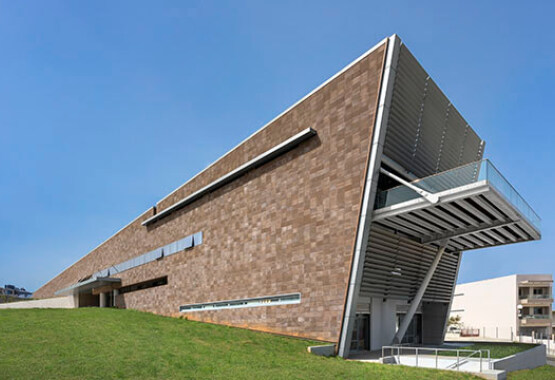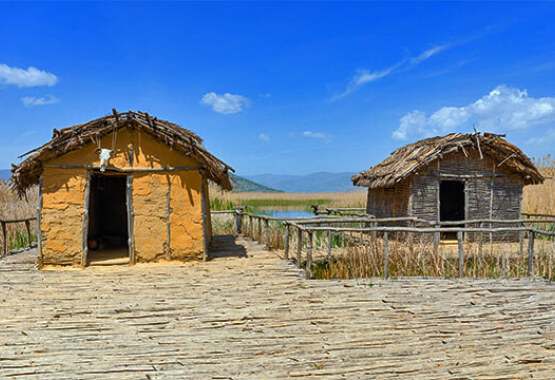
CHANIA
The site’s history begins from the Minoan Period (3500- 1070 BC), however there are traces dating back to the Geometric Period (1000- 685 BC), the Hellenistic Period (323- 67 BC) and the Roman Empire (67 BC - 324 AD).
Written sources and excavations so far show that the city’s greatest prosperity was during the Hellenistic times (end of the 4th - 3rd centuries BC) when it began to cut its own coins becoming economically and politically stronger. One side of the coin depicted the goddess Artemis and the other the king of Aptera, Apollo or Hera along with a torch, a bee or a bow.
During the Pax Romana period of the Roman Domination the city of Aptera started to shrink economically and politically while agriculture started to flourish. While its occupation continued during the Byzantine years it didn’t prosper.
The excavations as well as the restoration works that have been carried out, up to date, have brought to light:
Archaeological Site of Aptera
Aptera was one of the most significant city-states of Crete. The site is located on a plateau of an altitude of 200m above Souda Bay, about 15 km away from the city of Chania on the road towards Rethymno. The two city ports of Minoa (today’s Marathi) and Kisamo (current Kalives) made Aptera one of the most important commercial centers of Crete. Its inhabitants were skilful archers and fought as mercenaries bringing back wealth to their land.The site’s history begins from the Minoan Period (3500- 1070 BC), however there are traces dating back to the Geometric Period (1000- 685 BC), the Hellenistic Period (323- 67 BC) and the Roman Empire (67 BC - 324 AD).
Written sources and excavations so far show that the city’s greatest prosperity was during the Hellenistic times (end of the 4th - 3rd centuries BC) when it began to cut its own coins becoming economically and politically stronger. One side of the coin depicted the goddess Artemis and the other the king of Aptera, Apollo or Hera along with a torch, a bee or a bow.
During the Pax Romana period of the Roman Domination the city of Aptera started to shrink economically and politically while agriculture started to flourish. While its occupation continued during the Byzantine years it didn’t prosper.
The origin of the name Aptera
The origin of the city’s name is believed to refer to Artemis: “Artemis Aptera”. According to Pausanias the king of Delphi Pteras or Apteras gave his name to the city; he was the one to build the second temple of Apollo at Delphi and is also thought to be the city’s founder (namely Ptolioikos, as it is mentioned on the coins). Yet, the most charming myth is the one delivered by Stefanos Byzantios (6th c. A.D.) according to which the name derives from the mythic battle between the Muses and the Sirens on the hill of Aptera. The defeated Sirens threw their feathers - thus remaining featherless (“apteres”) - which turned white and fell into the sea. Their white feathers formed the islets of Souda Bay called Lefkes (White).A tour around the archaeological site
Your visit to the archaeological site of Aptera will get you acquainted with Crete’s history. The archaeological site continues to bring to light new important finds through ongoing excavations and attracts more and more visitors. It surely will fascinate you with all its monuments, its history and myths.The excavations as well as the restoration works that have been carried out, up to date, have brought to light:
- the surviving fortification of the city of almost 4 km length. It was built in the 3rd century. B.C. and the strong masonry reveals the great prosperity of the city during Hellenistic times.
- the arched roman cisterns, which served the city’s needs in water. You can see them by taking the path behind the chapel of Agios Ioannis Theologos. The roman cisterns supplied water to all public and private baths that are located to their west.
- a triple-arched arcade building dating back to the Roman Times associated with the parliamentary chamber and located east of the walls.
- the “double-parted sanctuary”, a small two-room temple, dating back to the 5th - 4th century BC.
- the ancient theatre, made entirely out of limestone and located at the south-eastern entrance of the city.
- part of a large private house (Roman-style manor) with a peristyle courtyard (5x7 columns) and tiled roof gallery located at the southwestern part of the city. Most of the columns and some capitals lay inside the courtyard.
- the ancient necropolis, which is located outside the walls in today’s neighbourhood of Plakalona Megalon Chorafion. The tombs that have been unearthed in recent years, date back to the Roman, Hellenistic (4th and 3rd centuries BC) and Geometric Periods (8th and 7th centuries BC).
- the monastery of Agios Ioannis Theologos, was constructed with material taken from the ancient city. It belonged to the monastery of Patmos and was in use up to the mid 1960’s. Today, it has partially been restored and is the first area you encounter as you enter the site.
- two fortresses of great historical significance are found near the antiquities that were built during the Ottoman Period. The “Palaiokastro” (Koules) fortress, which was built by the Turks in order to fight the Cretan revolution and the “Itzedin” fortress at Kalami, which was built in 1872 and had barracks, a hospital and other facilities. To get to Koule you’ll have to turn left at the last intersection before the archaeological site.




